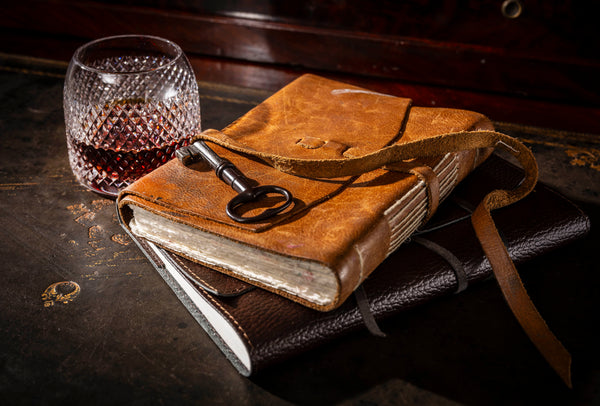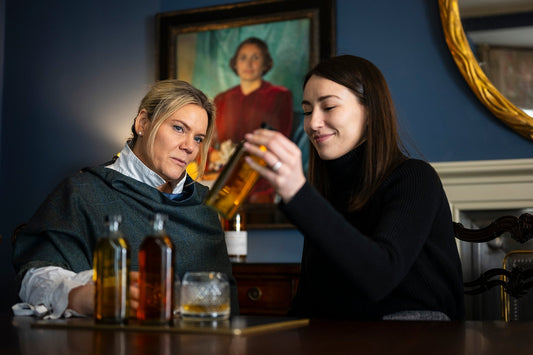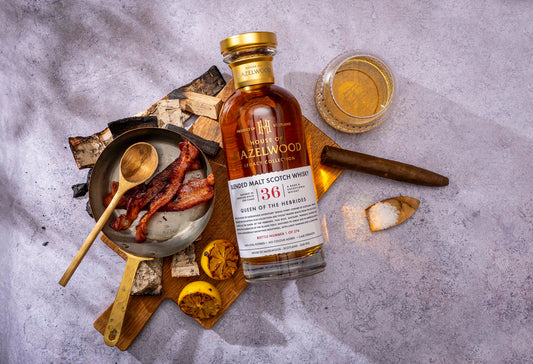The 20th century was undeniably the golden era of Single Malt Scotch. But with a meteoric rise in popularity in the latter half of the century, also came the casualty in the form of closed and defunct whisky distilleries, many of which would come to be known as “ghost distilleries”.
We look back at some of the distilleries we have sadly lost – and how you can enjoy the taste one last time.
Ghost distilleries are closed or demolished distilleries which no longer produce new make spirit for Scotch whisky, but their stocks are still currently available to purchase, albeit in dwindling availability.
Naturally, as these whiskies will never be produced again, they’re highly sought after as liquid time capsules of which will never be tasted again. Within the House of Hazelwood inventory, two expressions hold this coveted moniker – The Lost Estate, a 43-Year-Old Blended Grain Scotch Whisky, and The Eight Grain, a 40-Year-Old Blended Grain Scotch Whisky, which both feature grain ghost distilleries of the past.
What led to mass closures?
It is well documented following the devastating economical effects of the US prohibition and the Second World War, appetite to recover utilising the lucrative positioning of the Scotch Whisky industry was high. This, combined with new, freeing legislation increasing the possibilities of distillation in the 1950s, set in motion a butterfly effect which would culminate in an enormous whisky boom in the 1970s.
This appetite for many would fuel a short-sighted and overly ambitious over production of whisky, concluding in the mass closure of many malt and grain distilleries throughout the 1980s. Fuelled by poor economic outlook, the victims of this wide-scale mothballing were targeted due to their inefficiency, inability to be profitable or simply due to their flavour profile being considered less desirable for the palates of the time. This harbinger of closure would come to be infamously named “The Whisky Loch”.
Throughout the Whisky Loch, some closed distilleries remained mercifully intact in physical form, with production simply ceasing and doors being locked for one last time, never to be opened again. Others were less fortunate in their fate, and as they were stripped for assets, the industry lost liquid legacies – institutions that would never exist in the same form again, even if they were rebuilt in the future.
Of course, with this volume of closures, there were also a human cost as remote communities, of whom a significant percentage were employed in the industry, lost their jobs by the thousands – an event so monumental, the effects were discussed within the Houses of Parliament. The devastation was far reaching.
“Out of a total of 130 distilleries in Scotland no fewer than 106 are situated in the Highlands and Islands. The cut-back in distillation has caused several closures and long-term unemployment, while the majority of distillers remaining open have been forced to introduce short-time working. There is hardly a single distillery which has not been affected by one or other of these factors.” – Hansard, 24th November, 1982 – UK Parliament
In most articles referencing the 1980s Whisky Loch, the loss of Malt distilleries is often the focus, a lament for signature styles lost throughout the whisky regions, with Speyside particularly high in the casualties. However, during this time, the loss of grain distilleries, of which there are proportionally fewer of across Scotland was sobering, with six closing throughout the decade and the early 1990s. This closure is particularly monumental when considering the supply of grain whisky in bulk for the creation of what is still today the industry’s number one best seller by volume: Blended Scotch Whisky.
With this loss of grain whisky supply, suddenly distillers were faced with challenges of consistency and a need to drastically revise recipes to meet the existing demand. Since the closure of these distilleries, and a further closure of a major grain distillery, Port Dundas, in 2009, there are just six remaining active distilleries from this era across the landscape.
This sparsity helps to quantify the rarity of the liquid within Blended Grains like The Lost Estate and The Eight Grain – especially given that many of these distilleries have been razed – it is physically impossible for their form to exist as before.

Ghost Distilleries: A Taste of the Past
In recent years, an appreciation for Blended and Single Grain Scotch Whisky has come to the forefront, with aficionados celebrating the merits of its dessert-like quality. Of course, with this celebration of grain, demand is growing, making obtaining this taste of the past even more delicious.

The Eight Grain: Grain in All Its Glory
There is no better place to experience all that Scotland’s late and great distilleries have to offer than within The Eight Grain, A 40-Year-Old Blended Grain Whisky. Featuring a marriage of both active and closed distilleries, this release seeks to epitomise the signature character of grain across Scotland as a whole – and to exclude silent distilleries from inclusion would be remiss, as to exclude, would not be representative of grain’s golden age throughout the early to mid-20th century.
The resulting spirit is as gloriously gorgeous as one could expect, rich on the nose with baked sugar, caramelised banana, and a health slice of banoffee pie. The palate pleases with fleshy stone fruits, all underpinned with a generously creamy character.
Of course, such rarity is reflected in outturn, with just 384 bottles available worldwide, offered free from added colour and chill filtration, at a natural cask strength of 48.5% ABV, as the distiller intended.

The Lost Estate: A Relic of the Past, Bottled
A seeking palate of grains gone past need wander no further than The Lost Estate, a 43-Year-Old Blended Grain Scotch Whisky. This rare and compelling blend features two of Scotland’s late great, grain distilleries, offering a luscious liquid that is rarely available.
This release, unlikely its aforementioned Blended Grain counterpart, is an expression of rich, fruity esters, with the nose promising delights in the form of pear drops and juicy mandarin orange. The palate carries this sweetness to offer further hints of the tropics, offset with a bright, crisp barley sugar character.
Just 564 bottles of this precious drop are left, presented free from added colour, chill filtration, at a natural cask strength of 41.6% ABV, bottled under the House of Hazelwood whisky making methodology of minimal intervention.
Ghost Distilleries: Liquid Time Capsules
Of course, all good things must come to an end – and in terms of some of Scotland’s late ghost distilleries, rapidly dwindling stocks mean the end of enjoyment is regrettably night. But for those of us in the present, we can at least enjoy a glass or two of a liquid time capsule, secured from deep within the depths of the House of Hazelwood inventory.




